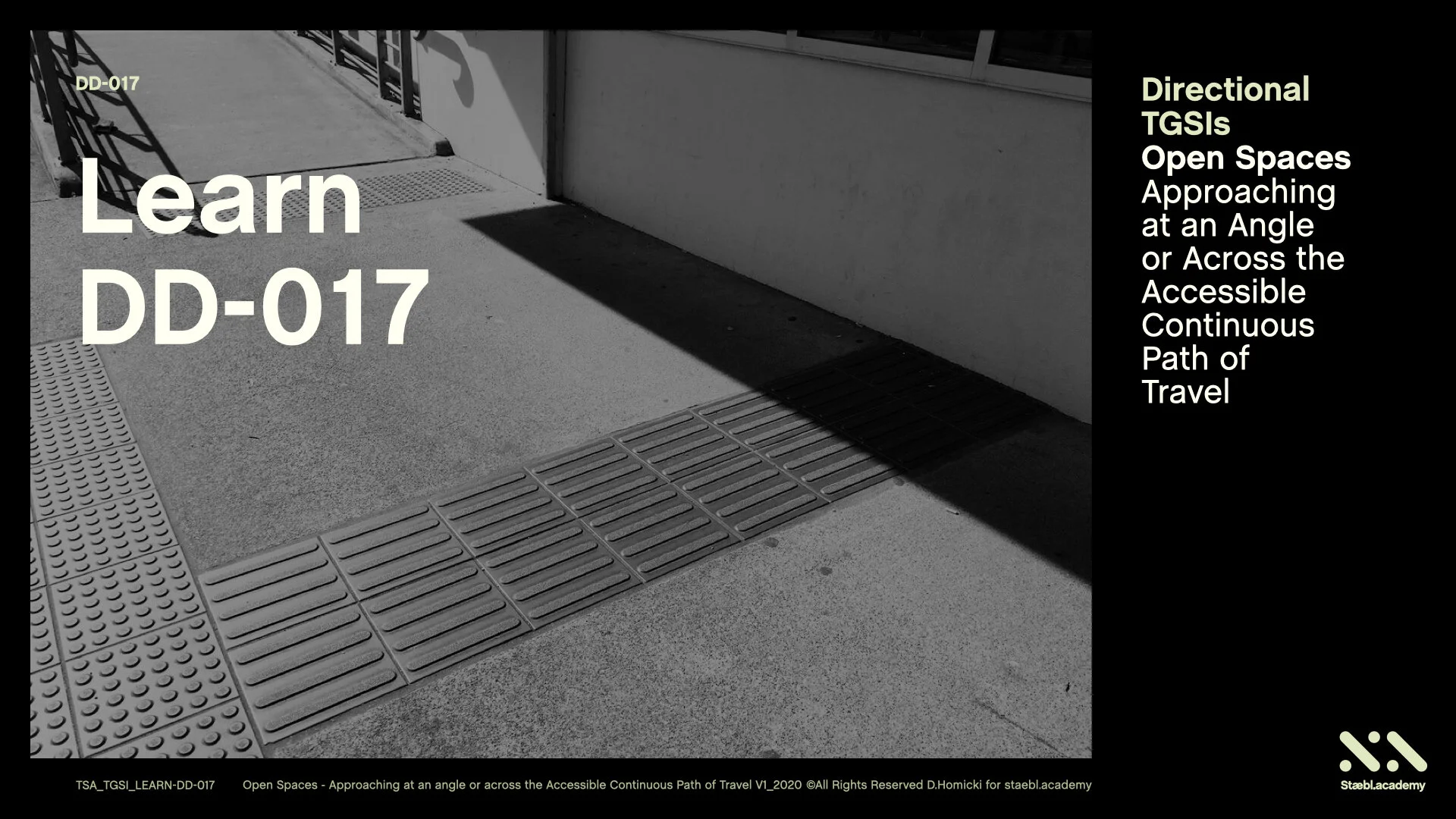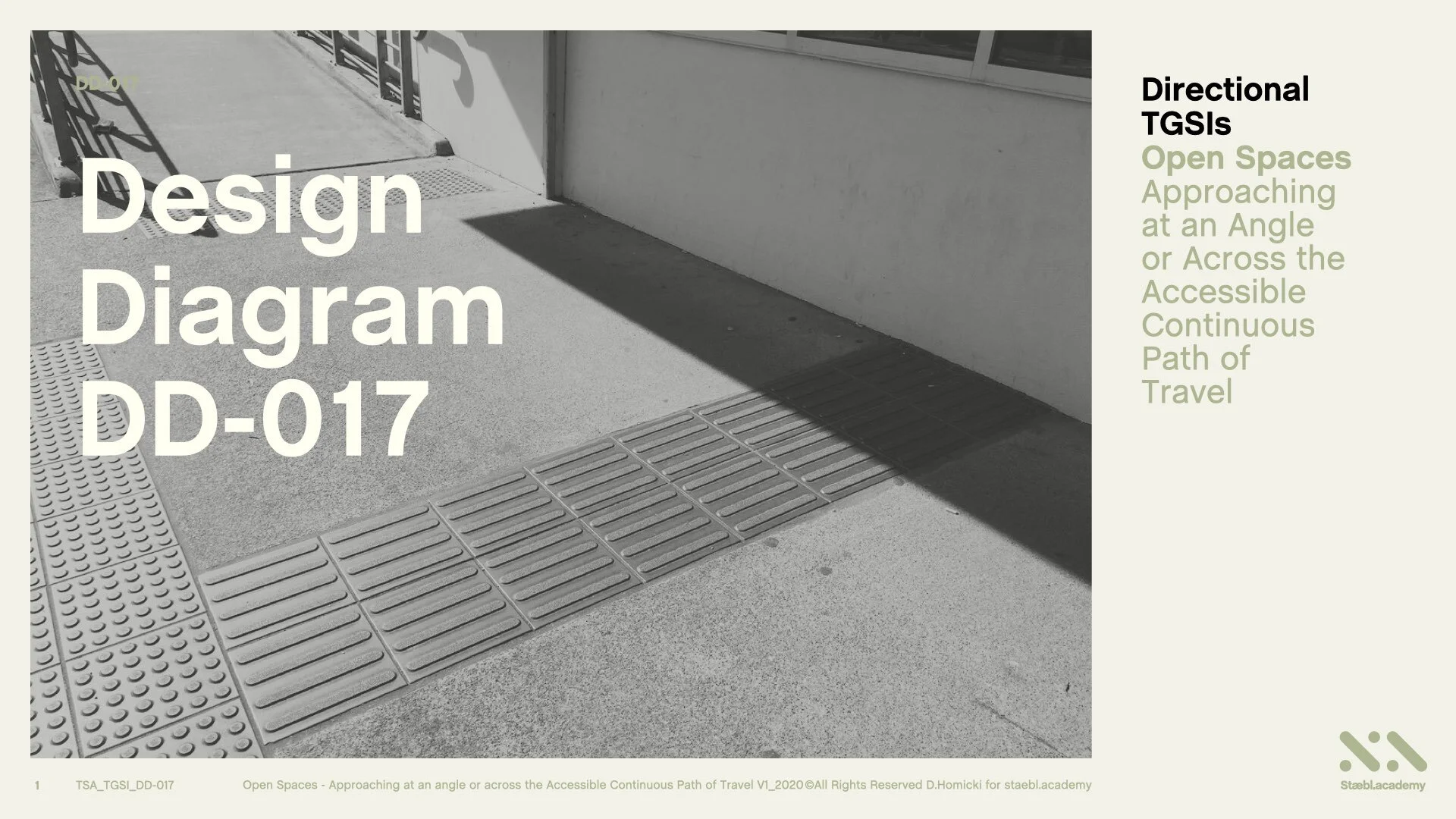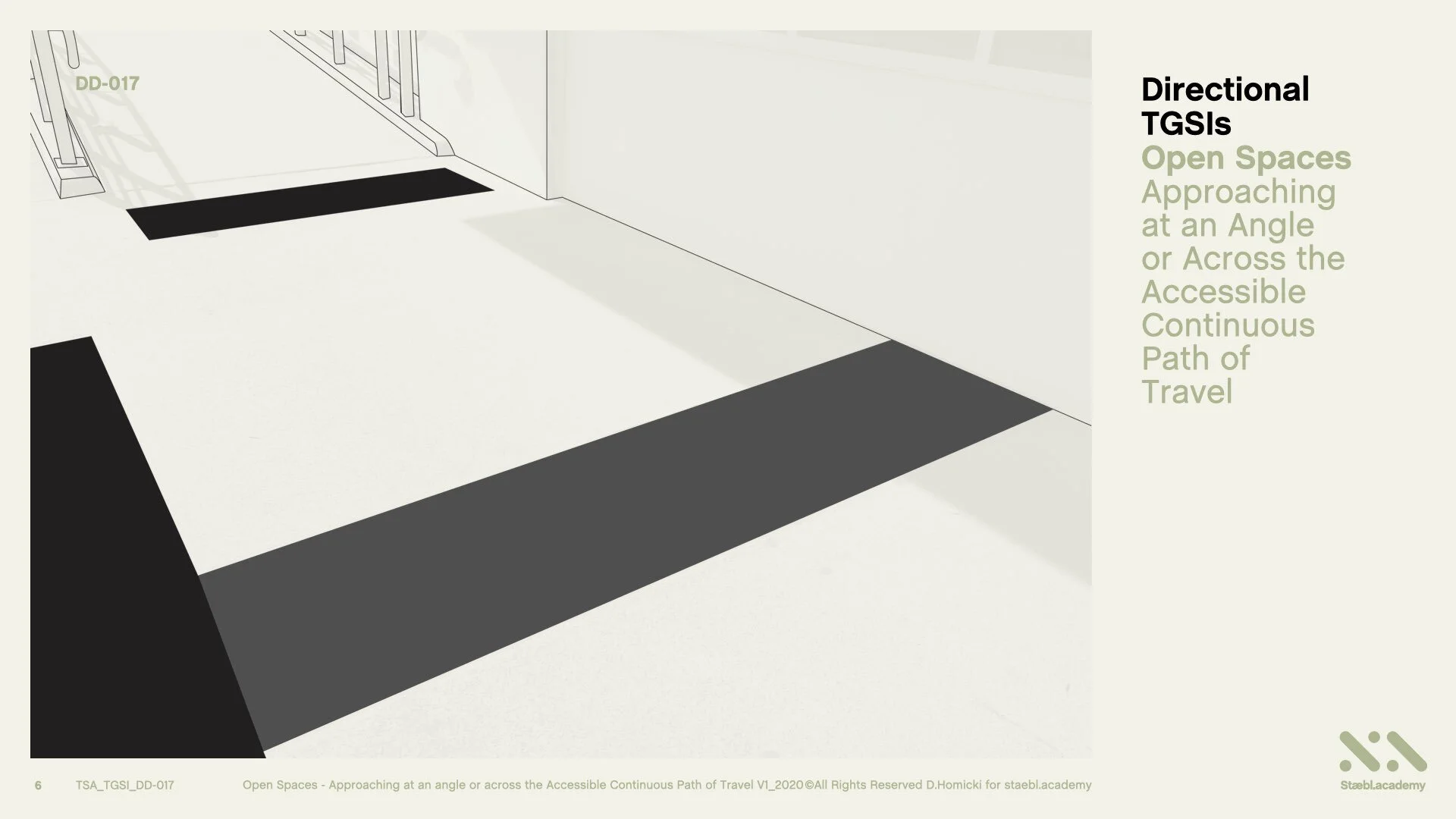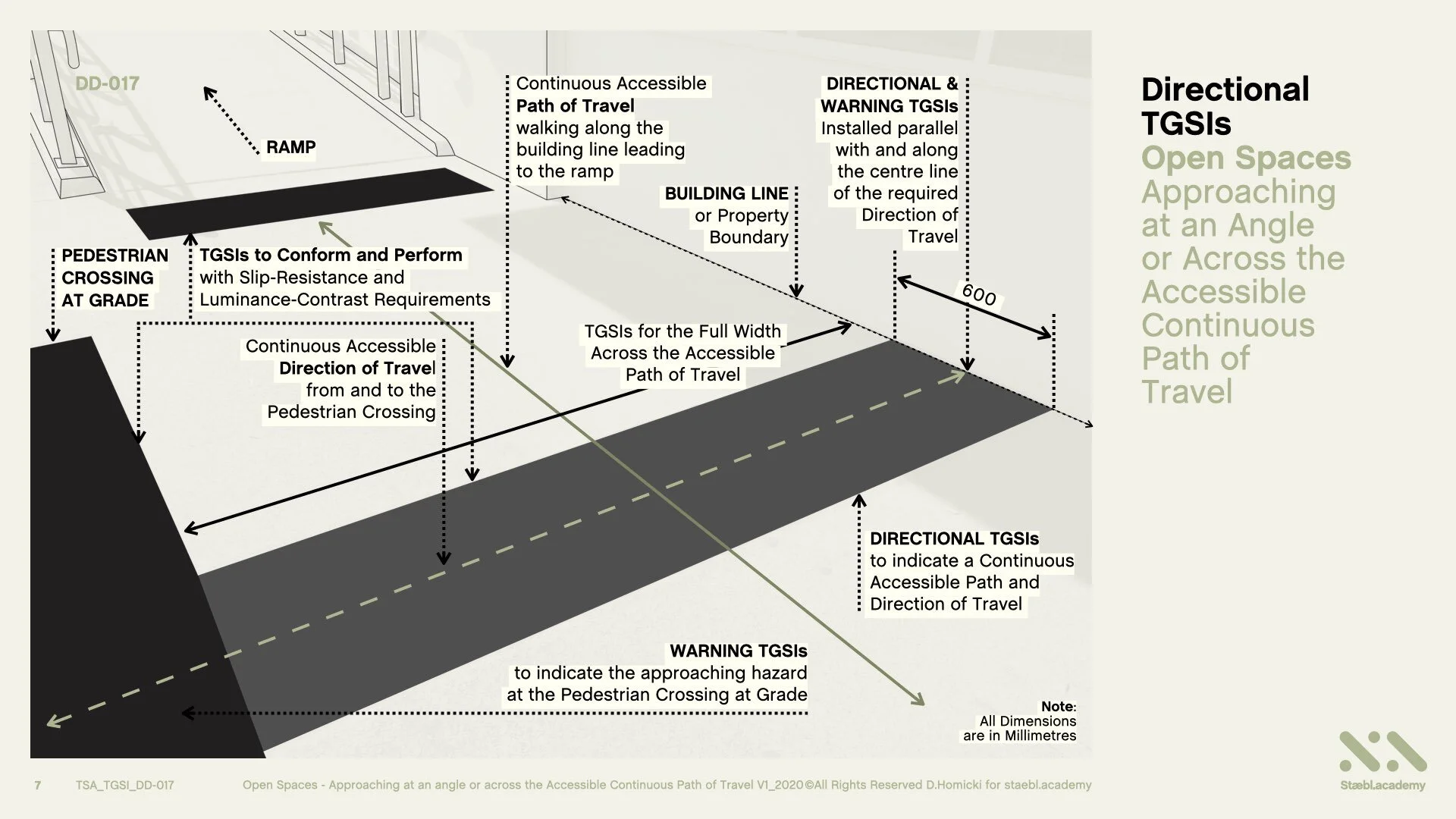Open Spaces- Approaching at an Angle or Across the Accessible Continuous Path of Travel
Course: DD-017 | Length: 4:26 mins | Instructor: Dean Homicki
Chapters
00:24 - Learning Overview
01:37 - Learning Session
02:12 - Let’s Begin
03:44 - Learning Resources
Transcript
This learning session will cover the use of Directional TGSIs in:
Open Spaces, approaching at an angle, or across the Accessible Continuous Path of Travel.
Welcome to staebl.academy TGSI Design Diagram 017. I’m Dean Homicki and I’ll be your guide for this course.
Learning Overview
Let’s review one type of use of Directional TGSIs in open spaces and together extract what the Australian TGSI Standard requires of the situation.
In open spaces, where directional orientation is provided by Directional TGSIs, that cross, or can be approached at an angle to an Accessible Continuous Path of Travel, the use of Directional TGSIs shall be arranged with a width of 600 mm, installed parallel with and along the centre line of the required Direction of Travel and, for the full length of the Path of Travel, providing for persons who are blind or vision-impaired safe orientation and travel through to their destination.
TGSIs for this application shall also conform and perform, with the applicable Slip Resistance and Luminance Contrast Requirements.
Here is a real-life example of an open space with Integrated Directional TGSIs installed. We are going to now convert this image it into a perspective line drawing and view how TGSIs have been used in this application.
Here’s the line drawing of the image.
Learning Session
How to use TGSIs in this situation
In this example, people can approach the Directional TGSIs at an Angle or as they cross the Accessible Continuous Path of Travel along the building or property line.
The Directional TGSIs here are to provide a clear Direction of Travel to the adjacent Pedestrian Crossing.
For the orientation of persons who are blind or vision impaired, applying this knowledge enables us to determine how to use TGSIs and conform to the Normative and Informative Guidelines of the Australian TGSI standards.
Let’s Begin
Here we see an ‘Open Area’ - that is, an area that is accessible at and from multiple angles of approach to the hazard. The hazard is the pedestrian crossing located on the left.
In this situation, we have ‘Two Accessible Paths of Travel’.
One is the Continuous Accessible Path of Travel walking along the building line leading to the ramp, and Two, is the Continuous Accessible Direction of Travel, from and to the Pedestrian Crossing.
Directional TGSIs have been used to indicate a safe and accessible path and direction of travel, leading to the Warning TGSI installed before the Pedestrian Crossing at Grade.
In this situation, Directional TGSIs are 600 mm wide. This equates to 8 TGSI Truncated Bars at 75 mm spacings.
The Directional TGSIs are applied, starting from the Building Line or Property Boundary, for the full width across the Accessible Path of Travel. The Directional and the Warning TGSIs must be Installed parallel with and along the centre line of the required Direction of Travel.
TGSIs for this application, also need to conform and perform, with the applicable Slip-Resistance and Luminance-Contrast Requirements.
And here is a real-life TGSI application once more.
Learning Resources
That’s the conclusion for Directional TGSIs in Open Spaces, Directional and Warning TGSIs in Open Spaces Approaching at an Angle, or across the Accessible Continuous Path of Travel.
You can also access this course as a concise series of design diagrams in the resource section of our website staebl.academy/design. To access this resource now, click on the link below this video.
Thanks for joining me here at the staebl.academy. I look forward to guiding you through another learning session in the near future. Bye for now.
Listen
Click/Tap the audio player below to listen to the written transcript of this design session as an audible version. This is a streamed broadcast from the Staebl.academy site.
Diagrams
Click/Tap on an image from this learning session to view it as a larger picture. You will then be able to scroll through each individual design diagram in this slide-deck for a closer inspection.
Sources
TSA-TGSI-LEARN-DD-017 - This staebl.academy course module has drawn information from the following sources:
AS/NZS 1428.4.1: 2009 Design for Access and Mobility: Means to assist the orientation of people with a vision impairment - Tactile Ground Surface Indicators - Section 3, 3.1 General (a), (c), 3.2.1 (b) and 3.2.3 (a), (b), (c) and (e), Notes (1) and (2), Section 3.3 Figure 3.2 Appendix A, A3.3 (d)












